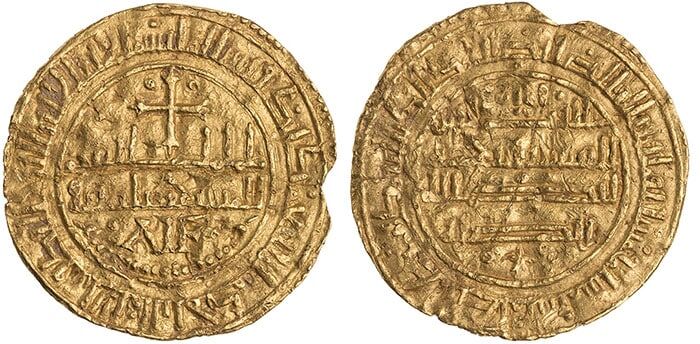By David Yoon for American Numismatic Society (ANS) ……
This essay is being written on December 31, 2021, to be posted on January 4, 2022. It seems like a suitable moment to think about calendars and years and how people define them.
The presence of year dates on coins is tremendously useful to the numismatist – probably more useful than the dates generally were to the governments that decided to put them on the coins, usually for administrative control. And numismatists are well aware that many different dating systems are found on coins from antiquity, from the Islamic world, and from Asia, ranging from regnal years to local eras to major religion-based calendric eras, with many other variations as well. There is much that could be said about these, but for now I will concentrate on a much narrower topic.
For modern people raised in cultures of European derivation, medieval and early modern Europe can be a mix of the familiar and the unfamiliar, and perhaps on the latter side is the existence of many different systems of dates on coins. Examples include the era system of medieval Spain, the regnal years on papal coins, or the occasional use of Islamic dates on coins issued by Christian rulers.

Gold maravedí of Alfonso VIII of Castile, dated Hispanic Era 1226, equivalent to 1188 CE (ANS 2014.9.2, purchase).
Silver testone of Pope Paul III, dated to year 12 of his reign, equivalent to 1545–46 CE (ANS 1937.146.304, bequest of Herbert Scoville).
Gold tarì of Roger II of Sicily, dated to Hijri year 535, equivalent to 1140–41 CE (ANS 1922.96.19, gift of Edward T. Newell).
Even the Dionysian era (the Common Era or Anno Domini dates that are now widely used around the world) presents variations that may surprise the unwary numismatist who seeks to correlate coins and historical events. Like other kinds of measures, the measurement of time varied from one locality to another. Perhaps surprisingly, there seems to have been general agreement on the days of the Julian calendar, but different places opted to start the year on different days. Thus, although everyone in medieval Europe might agree that a particular day was January 4, that day was considered to belong to different years in different places.
The Gregorian calendar adopted throughout Europe between 1582 and 1926 not only shifted the date by several days (10 days in the 1500s, 13 days in the 1900s) and adjusted the calculation of leap years; it also standardized the beginning of the year on January 1. This date was chosen in emulation of the term of office of the consuls of ancient Rome, but before the adoption of the Gregorian calendar, January 1 was a distinctly unusual starting point for the year.
The most common start of the year in medieval Europe was March 25, the Feast of the Annunciation exactly nine months before Christmas. Thus, the day that in present-day Gregorian reckoning was January 11, 1522, was known in medieval England as January 1, 1521, because 1521 continued through March 24. However, there was some disagreement as to whether the birth of Jesus should be in 1 BC or in AD 1, and thus which year began on a given March 25. For example, Gregorian April 4, 1595, was March 25, 1595, in Florence, but March 25, 1596, in nearby Pisa. Other countries preferred to start the year on December 25 instead of March 25, such as Arezzo (near both Florence and Pisa). The French monarchy began the year on Easter Sunday, meaning that the year began on a different date from one year to the next, and years could vary in length by several weeks.
These small differences can be very important for understanding dated historical documents: for example, when compiling prices recorded by medieval Florentine and Pisan merchants, one must be aware that the same day belonged to different years in the two cities. For the most part, these differences are of less importance with regard to the coins themselves, not least because most medieval and early modern European coins are not dated in any system.
Occasionally, however, one finds dates that offer considerable potential for confusion if one is not aware of calendric differences.
The so-called gun money issued in the name of James II during the war that followed the Glorious Revolution of 1688 is dated not only by year but also by month. The incautious numismatist might imagine that a coin dated February 1689 was issued seven months before a coin dated September 1689. However, England had not yet adopted the Gregorian calendar, and February 1689 was actually five months after September 1689.
A “gun money” shilling of James II of Ireland, dated September 1689 (ANS 1945.23.27, purchase).
A “gun money” shilling of James II of Ireland, dated February 1689 (ANS 0000.999.44407).
* * *
